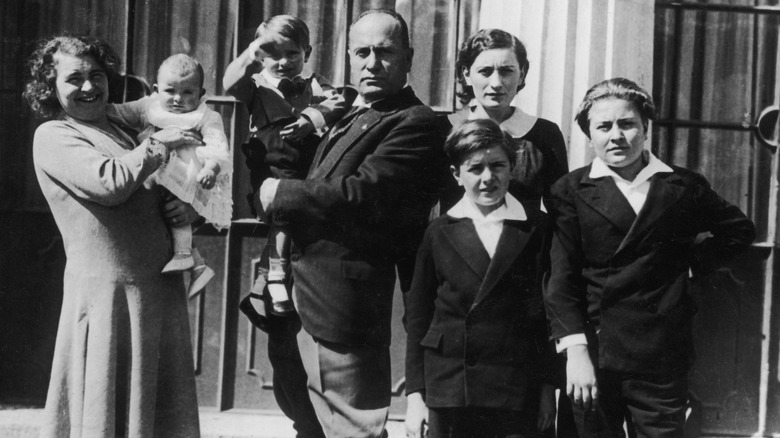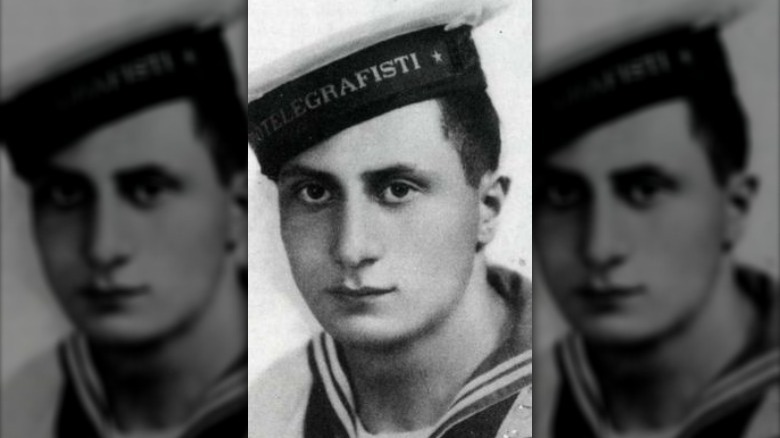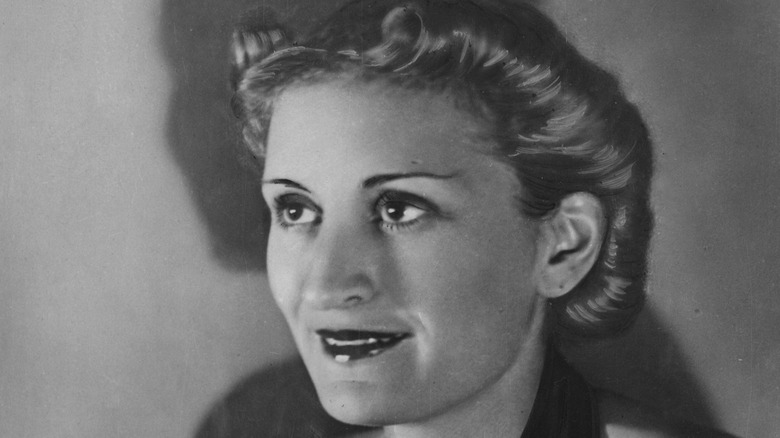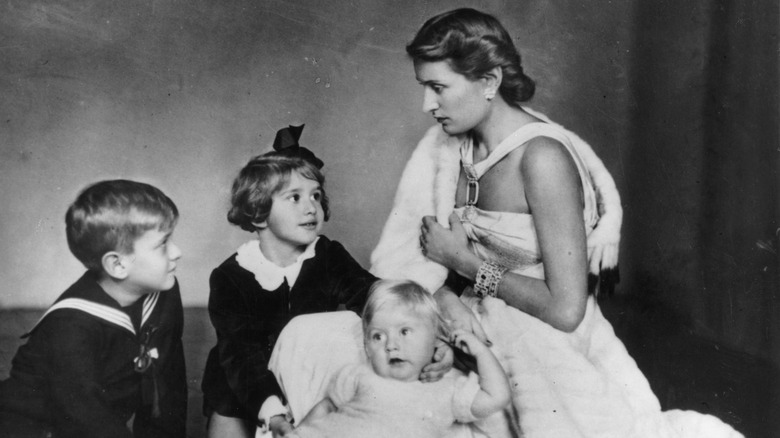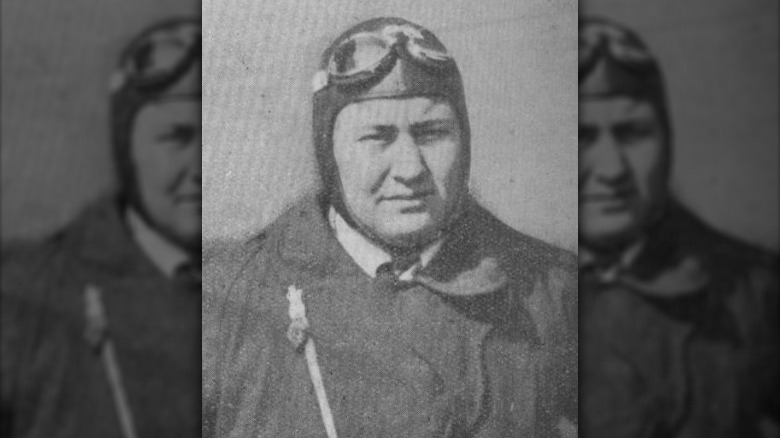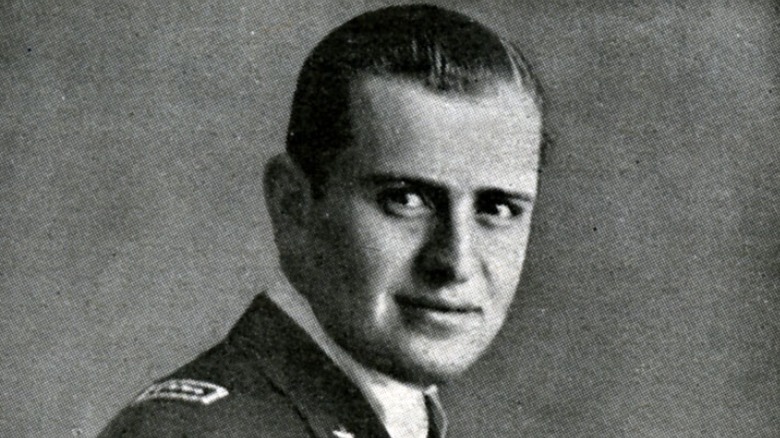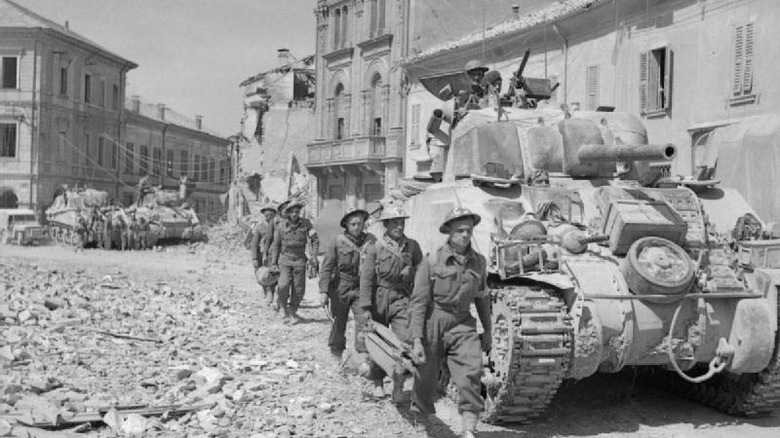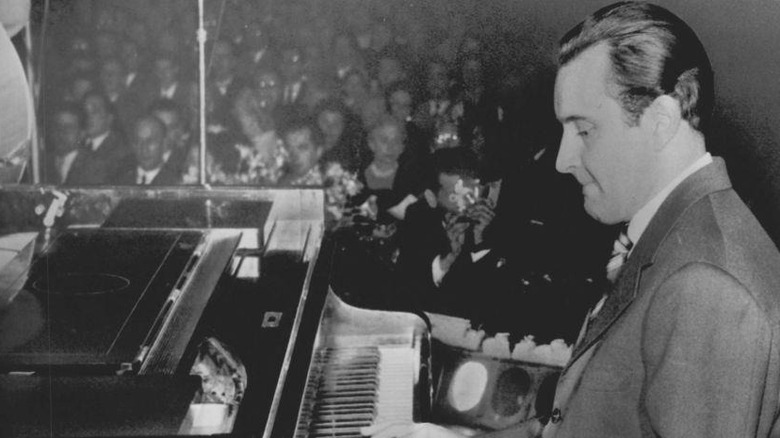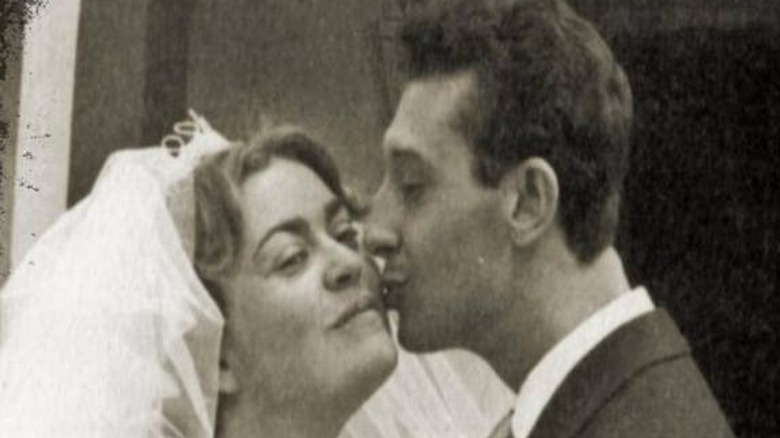What Happened To Benito Mussolini's Children?
Benito Mussolini, the dictator of Italy from 1922 to 1943, collaborated with Adolf Hitler in World War II, eventually earning him the hatred and vilification of his people. The notorious Italian fascist leader was executed along with his mistress, Clara Petacci, in Milan in 1943, as noted by HISTORY. He went down in history as a cruel buffoon who sold out his nation to the Nazis.
But what happened to his large family, including the first wife and son that he sought so desperately to silence, as per as The Independent – and how could such a secret be kept for decades? What became of his eldest daughter, who, as the New York Times notes, played advisor to her father? And what part did the rest of his children play in postwar Europe, as the true nature of the horrors perpetrated by their father's Fascist brethren was revealed? Let's take a closer look at the children — both legitimate and illegitimate — of the infamous World War II collaborator.
Benito Albino Mussolini
One of the most disturbing stories regarding Benito Mussolini's family life was that he and his government tried to remove all traces of the existence of his first wife, Ida Dalser, and their son, Benito Albino Mussolini. Incarcerating Dalser in an insane asylum, their son was thrown into another mental hospital, later dying at the age of 27 after being injected multiple times with coma-inducing drugs, The Times reports.
It was only in 2005 that the story of Benito Mussolini's almost unfathomable cruelty toward his first wife and son came to light, thanks to the documentary "Mussolini's Secret," airing on Italian television. According to evidence presented in the film, Benito Mussolini married Dalser in 1914 when he was fighting in World War I. By 1922, however, the marriage was on the rocks, and he tried to sweep evidence of Dalser and their son under the rug. When Dalser then attempted to contact Fascist authorities, she was rebuffed; and that's when her troubles truly began, as she was thrown into a mental asylum in 1926. She fought back by stating she had evidence that Benito Mussolini had taken French bribes to fight against Austria in World War I, information that would have doomed his career, since he had just seized power that year. Their son, Benito Albino, was then abducted and thrown into a different mental hospital. Dalser died in the asylum in 1937; her son died in 1942.
As the Times also notes, while mother and son were declared mentally unstable, hospital records that were later found described both as lucid.
Edda Mussolini Ciano
Edda Mussolini was born out of wedlock on September 1, 1910, as per Encyclopedia, to Benito Mussolini and Rachele Guidi, years before the two would marry in 1915. Edda was known for her brashness and unconventionality, as TIME stated in its cover story on her in 1939. Featured as a "Lady of the Axis" in July of that year, she wore trousers long before it was socially acceptable and enjoyed the social position that came with being the daughter of Benito Mussolini. Calling her a mover and shaker, TIME acknowledged her as the smartest and most personable of all Benito Mussolini's children.
She married Count Galeazzo Ciano, the son of Admiral Count Costanzo Chiano, in April of 1930 and assumed the title of countess. The New York Times noted that Edda acted as an adviser to her father throughout the 1930's. TIME noted she was feted by Adolf Hitler when her father sent her to Germany as an envoy in 1936. She even had a dalliance with Chinese general Zhang Xueliang, as per the New York Times.
Allied victories in North Africa and Greece prompted her husband to agitate for the creation of a peace agreement with the Allies in 1943 and the ouster of her father, Benito Mussolini, as noted by History. At the time he was head of Italy's foreign ministry, so Ciano was subsequently removed from office. And even despite Benito Mussolini being pushed out of power in 1943, his influence extended to the new Nazi puppet state in northern Italy, which sentenced Ciano to death.
Edda found herself escaping with her children to Switzerland, as reported by TIME in July of 1944, after police had orders to take her alive or dead (likely with the knowledge and approval from her very own father).
Edda Mussolini after her husband's death
Although Edda Mussolini Ciano pleaded with her father for the release of her husband, Count Galeazzo Ciano, per The Washington Post, the count was shot by a firing squad in April 1944. Edda subsequently renounced her father — and the family name. "I prefer to be the wife of a victim of Fascism than the daughter of il Duce," she declared. She wrote in a letter to her father, "You are no longer my father for me. I renounce the name Mussolini."
After her escape to Switzerland, Edda was returned to Italy, where she was imprisoned at Lipari. As Ozy reports, she was exiled there for two years and suffered under poor living conditions. However, while there, she also met and fell in love with Leonida Bongiorno, the local communist chief.
As the New York Times reports, after the war, Edda lived in Rome and largely remained silent on the events of her life until the late 1970s, when her book, "My Truth," was published. She wrote that in one of her father's last letters to her, he believed she would judge him less harshly for the events of her husband's death if only father and daughter could speak in person. She remained in Rome until her death in 1995 at the age of 84.
Edda's break with her still-powerful father — and Fascism — shows that in the end, true to her character, she stood up to his evil machinations. The San Francisco Chronicle reported that her niece, Alessandra Mussolini, said, "My aunt always lived her life as a man, with the independence and courage that many other women of that era didn't have."
Vittorio Mussolini
Vittorio Mussolini was the oldest son of Benito and Rachele Mussolini, born in 1916, as per Encyclopedia. As the Independent notes, Benito was largely absent from Vittorio's childhood, and treated him formally when he was around.
At 20, he became a lieutenant in the Italian Air Force and participated in his father's campaign against Ethiopia, as well as the Spanish Civil War, on behalf of the Nationalists. Vittorio clearly found a crude glee in bombing, saying the patterns that exploding bombs created amongst a group of people he targeted made him think of budding roses. "It was most entertaining," he wrote in his book, "Life With My Father" (via the Independent).
Between serving as a pilot, Vittorio Mussolini explored his artistic side in penning the screenplay — along with noted film director Roberto Rossellini — for "Luciano Serra, pilota," the most popular Italian film of the 1930s. As noted in the book, "History of the Hal Roach Studios," written by Richard Lewis Ward, back in 1937, Vittorio had even formed a partnership with legendary Hollywood director and producer, Hal Roach, who created his own studios in Culver City, California. The venture came to a screeching halt when the Hollywood community learned of Roach's deal with the son of the Fascist dictator.
Vittorio's brief forays into the film world between the wars didn't dampen his ardor for Fascism, and even after Italy signed an armistice with the Allied nations in 1943, he stumped for the cause. As the Tampa Bay Times relates, he traveled to Germany to give speeches in support of the Axis powers and spoke via radio to prop up his father's puppet state. He also became the family apologist, penning a series of works that whitewashed his family's behavior and politics. He died in 1991 at the age of 80.
Bruno Mussolini
Bruno Mussolini was born August 12, 1918, the second son of Benito and Rachele Mussolini, as per War History Online. Despite being a sickly child, he grew up to be a skilled pilot. As noted in TIME, the young airman had received his gold wings at the hands of his father when he was only 17 years of age, becoming, at the time, the youngest licensed pilot in Italy. He fought in both the second Italo-Ethiopian War and the Spanish Civil War (but was taken out of action after it was apparent that he was being targeted as a son of Benito Mussolini). He even flew in World War II, once telling his father that the Germans were certain to lose (via War History Online).
The New York Times reported that Bruno was at the controls of an experimental four-engine Piaggio 108 bomber when he crashed outside the San Giusto airfield in Pisa on August 8, 1941, leaving his wife, Gina Ruberti Mussolini, a widow, and his daughter, Marina Mussolini, without a father at only 1 year old. Bruno was only 23.
After the death of the well-regarded pilot, his grief-stricken father wrote the book "Parlo con Bruno," or "I Talk with Bruno," as a way to deal with his sadness.
The Mussolini children were taken into custody by the Allies
Benito Mussolini's family was not informed by the Italian partisans — or any other officials — that he indeed had been killed on April 28, 1945; they found out that he — along with his mistress, Clara Petacci — had been shot, and their bodies strung up by their heels (via History), by reading the newspaper L'Unita the next day, Romano Mussolini recalled in his memoirs, "My Father, il Duce."
The family was subsequently taken into custody and held by the Allies before being released. Romano stated to Corriere della Serra that in May of 1945 the Americans came and transported them to the Villa d'Este, later handing them over to the British at Montecatini. In his words, they went to live in a "camp in Terni, and then in Ischia, in confinement. Immediately, the island seemed to us a paradise, it was certainly not Siberia," adding that they were warmly welcomed by the locals. Romano, a talented pianist, even played there along with local musicians, The Atlantic notes.
The family was released from Ischia, the island that had been their relatively comfortable place of exile, after one year. Later, Romano told Corriere della Serra they had little problem reintegrating themselves into postwar Italian life: "The Italians have always treated us well, we never needed an escort."
Romano Mussolini
Romano Mussolini, the youngest son of Benito Mussolini, born in 1927, became a noted jazz pianist, performing with the likes of Dizzy Gillespie and Duke Ellington. As the BBC noted, he married Anna Maria Scicolone, sister of the beloved Italian actress, Sophia Loren; they had two daughters, Elisabeta Mussolini and Alessandra Mussolini (via the New York Times), who represented the National Alliance party in the European Parliament. He later divorced Scicolone and married Italian actress Carla Maria Puccini, and the two had a daughter, Rachele Mussolini.
Although initially hesitant to use his surname after the war, going by the moniker "Romano Full," according to The Atlantic, he began using his birth name after gaining recognition for his talent in the '60s. He then formed The Romano Mussolini All-Stars. Romano had been an early aficionado of jazz, despite the fact that his father was a dedicated classical violinist who would play for hours at home. "I remember the first time I heard a Louis Armstrong record. The sound was so beautiful I cried," he recalled.
Romano had warm memories of his father, including the last time he saw him — 11 days before his execution — when Benito Mussolini listened to him playing "The Merry Widow" on the piano. The dictator told his son to kKeep playing" before he left. Many years later, Romano came out with a memoir recounting life with his father, called "My Father, il Duce." When his daughter Alessandra formed her Social Alternative party, Romano even wrote its official anthem, titled "The Pride of Being Italian." He did in 2006 at the age of 79.
Anna Maria Mussolini
Benito Mussolini's youngest daughter, Anna Maria Mussolini, was born in 1929, as per Encyclopedia. As Reuters notes, she suffered from polio as a child and was known to be able to get away with misbehaving, as later related in Corriere della Serra in an interview with her brother, Romano Mussolini. In 1945, she, Romano, and their mother, Rachele Mussolini, took refuge at a family friend's home on Lake Como and only heard of Benito's death when they read about it in the newspaper.
Anna Maria married actor and nighclub MC Giuseppe Negri in June of 1960, per TIME. As the Economist points out, she wasn't a very ambitious woman, seemingly leaning in to her marriage and children.
Anna Maria died at the age of 38 in 1968. Despite staying out of politics and the spotlight her entire life, there was a large Fascist contingent at her funeral, as recorded by Reuters in a newsreel.
